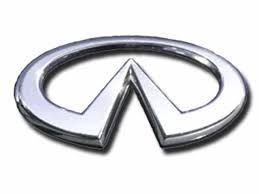QX56 AWD V8-5.6L (VK56DE) (2005)
/Page-503001.png)
Compression Check: Testing and Inspection
On-Vehicle Service
CHECKING COMPRESSION PRESSURE
1. Warm up the engine thoroughly. Then stop the engine.
2. Release the fuel pressure. Refer to "FUEL PRESSURE RELEASE".
CAUTION: Leave the fuel pump fuse disconnected until step 7.
3. Remove the spark plug from each cylinder.
4. Connect the engine tachometer (not required in use of CONSULT-II).
5. Install the compression tester with Tool into the spark plug hole.
Tool number: EG15050500 (J-45402)
6. With the accelerator pedal fully depressed, turn the ignition switch to "START" for cranking. When the gauge pointer stabilizes, read the
compression pressure and engine rpm. Perform these steps to check each cylinder.
CAUTION: Always use a fully charged battery to obtain specified engine speed.
^
If the engine speed is out of the specified range, check the battery liquid for proper gravity Check the engine speed again with normal battery
gravity.
^
If the compression pressure is below the minimum value, check the valve clearances and parts associated with the combustion chamber (valve,
valve seat, piston, piston ring, cylinder bore, cylinder head, cylinder head gasket). After checking, measure the compression pressure again.
^
If some cylinders have low compression pressure, pour a small amount of engine oil into the spark plug hole of the cylinder to re-check it for
compression.
-
If the added engine oil improves the compression, the piston rings may be worn out or damaged. Check the piston rings and replace if
necessary.
-
If the compression pressure remains at a low level despite the addition of engine oil, the valves may be malfunctioning. Check the
valves for damage. Replace the valve or valve seat accordingly.
^
If two adjacent cylinders have respectively low compression pressure and their compression remains low even after the addition of engine oil,
the gaskets may be leaking, or a valve in adjacent cylinders may be damaged. Inspect and repair as required.
7. Install the components in the reverse order of removal.
8. Start the engine and confirm that it runs smoothly.
9. Perform trouble diagnosis. If DTC appears, erase it. Refer to EC-95, "TROUBLE DIAGNOSIS". See: Powertrain Management/Computers and
Control Systems/Testing and Inspection/Initial Inspection and Diagnostic Overview/Diagnostic Strategies/Introduction
